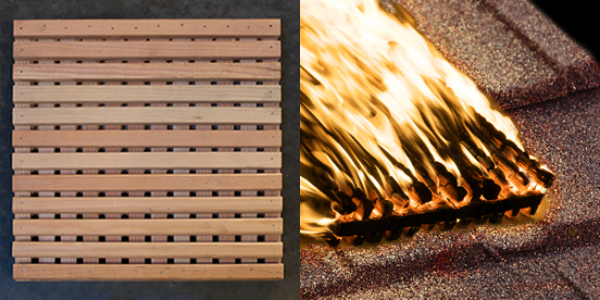Reminder - It's Roof Fall Cleaning Time

By ICP Group.
Follow this handy guide for maintaining your roof.
Fall is coming! And while you might already be doing your semi-annual cleaning, it is possible you are missing a huge spot: your roof. It can’t be stated enough the importance of a properly maintained roof, and fall cleaning to prepare a roof for colder weather is a large part of making sure the roof continues to work in tip-top shape.
Here is APOC’s guide on what to look for when it comes to spring cleaning. A preventative maintenance inspection consists of a thorough visual inspection and documentation of the roof system. So let’s take a closer look at what you should get inspected and why. During an inspection, a professional will do the following:
Roof membranes and flashings
Ensure all flashing membranes are in good condition. Check for signs of stress, cracking, splitting, wrinkles, blisters, etc. Remove any foreign matter such as balls, shoes, tools, branches, oils, chemicals, liquid or other objects. Then, clean the roof membrane and closely inspect for signs of physical damage.
Gutters, drains and scuppers
Because these are the main avenues that rainwater travels off a roof surface and is directed away from the building, it is crucial that these areas are inspected and maintained. Clean and remove any debris clogging or obstructing the flow of water. Look for any sights of cracking or splitting of the membrane around your drains and scupper. If anything is noted, they must be repaired immediately by a qualified roofing contractor.
Penetrations
Inspect penetrations for signs of wear. Ensure that the base of the penetration remains completely sealed and attached to the roof membrane.
Pitch pans
Check all pitch pans for shrinkage. As sealants shrink over time, water may begin to sit on the top of the pitch pan causing rust, leaks and deterioration.
Metal flashings
Inspect all metal flashings, counter flashings, copings, seams, joints, gravel stops, edge metal and other areas to ensure they are secure and free of rust or deterioration. Any unsatisfactory conditions should be repaired as soon as possible.
Rooftop equipment and accessories
Inspect all rooftop equipment for deterioration and areas that are prone to water penetration. This includes HVAC equipment, duct work, curbs, skylights, etc.
Expansion joints
Check all expansion joints for deterioration, wear and defects. Check the metal components to ensure they are fully secured and free of rust. Make sure the expansion joint is still flexible and resilient. Look for any signs of cracking or splitting while manually flexing the joint.
A good rule of thumb is to have a professional conduct a roof inspection twice a year — once in the spring and again in the fall before the first snow. If your roof is subject to unusual conditions, more frequent inspections should be conducted.
It’s important to identify the problems areas of a roof and take these steps to ensure your roof lasts throughout the season. After all, properly maintaining a roof in early spring is the number one way to help prevent the stress of costly emergency repairs!
Have a question? AskARoofer.
Find your local roofing contractor in the RoofersCoffeeShop® Contractor Directory.
Original article source: APOC
Disclaimer: The information provided on AskARoofer.com or information sent by emails is the opinion of the writers. It is the responsibility of the reader to check for accuracy in one's own jurisdiction, as there are different codes and restrictions for different parts of the country. AskARoofer.com does not accept any liability for the use of information on this website or email. AskARoofer.com has no controls over product failures, installation, or climate conditions that may change the roofing process in your area. Our information is in general to our area and cannot be the same as your local town or state. It is advised to seek the local Building Department, Licensed Contractor, and local Product Representative for proper installation requirements and code enforcement when installing a new roof.










Comments
Leave a Reply
Have an account? Login to leave a comment!
Sign In